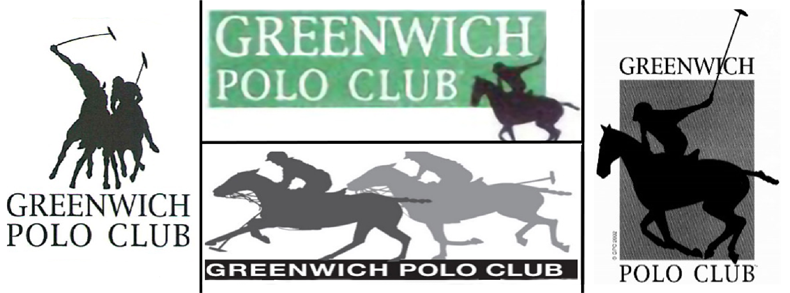GPC plays it straight
For one polo club, a successful defence proved fairly simple, says Simon Miles.

This High Court trade mark infringement and passing off action involved the alleged infringement of the Beverly Hills Polo Club stylised trade mark (the BHPC logo), owned by the Claimant, Lifestyle Equities CV (LE), through the use of various stylised Greenwich Polo Club signs (the Greenwich Signs, shown opposite) on clothing and textiles, and through the supply of certain promotional services by a licensing agent.
The Defendants comprised the owner of the Greenwich signs, Greenwich Polo Club Inc., its exclusive licensing agent, the Copyrights Group Ltd (Copyrights), a director of Copyrights, a sub-agent, and four licensees (the Licensee Defendants) who produced goods bearing one of the Greenwich Signs.

LE and Lifestyle Licensing BV are the owner and exclusive licensee, respectively, of a number of EU and UK trade marks for the BHPC Logo. Beverly Hills Polo
Club is not an actual polo club, but rather a lifestyle brand drawing on the luxury of Beverly Hills and the glamour of the aristocratic sport of polo.
In contrast, Greenwich Polo Club (GPC) is a well-known polo club based in Greenwich, Connecticut. GPC owns and licenses a number of registered trade marks for logos consisting of a polo pony or ponies and rider(s) with mallet(s) and the text “Greenwich Polo Club”.
As it has done on a number of occasions against other polo club brands, LE brought proceedings in the UK courts for trade mark infringement and passing off – this time against GPC and the seven other Defendants. LE alleged that each Defendant had, at some stage in the trading process, used or threatened to use in the course of trade in the UK and/or the EU signs that infringed and/or passed off LE’s marks.
The Judge first dealt with the alleged primary infringing conduct of the Licensee Defendants, because they had caused goods bearing the GPC logos to be put on the market.
On the evidence, the Judge found that only Greenwich Sign 3 had been used in relation to products, and even then only in Greece, Cyprus and Bulgaria.
Similarity and confusion
The Defendants argued that the respective marks were not similar enough and there was no likelihood of confusion because, taking into account the fact that a polo pony and rider motif symbolises the sport in general, many brands, clubs and entities deploy a polo pony and rider motif in their branding, nearly always with an additional word element to designate the club, origin or brand. The Defendants submitted a considerable amount of evidence of third-party polo brands in the marketplace to show that there was a developed market for consumer items for such brands, and that consumers know that they come from different owners.
The Judge agreed with the Defendants on this point and ultimately concluded that a polo horse and rider motif added nothing to the distinctiveness of the BHPC logo, save to make clear that there was a generic link to polo.
After comparing the visual elements of the marks, the Judge found that the similarities between the figurative elements were low
but that, importantly, the critical distinction between the marks was that the words “Beverly Hills” and “Greenwich” actively sought to differentiate between originators.
The Judge therefore held that the marks were insufficiently similar and the reasonably well-informed and reasonably circumspect consumer could not be confused between the marks in question. The Claimants had sought to minimise the distinctiveness of the word element of the Greenwich Signs by suggesting that in the relevant territories – Greece, Cyprus and Bulgaria – the consumers use a different alphabet, thus accentuating the importance of the figurative elements. In the Greek and Cyrillic alphabets, the words “Polo Club” are, when translated, the same, but the words “Beverly Hills” and “Greenwich” are different. The Judge thought that this fact served to emphasise the point that these words, and the links and concepts that they reference, are very different.
The Judge went on to find that that there was no infringement under Article 9(2)(b) EUTMR or s10(2) of the Trade Marks Act 1994 (TMA). The passing off case fell with the Article 9(2)(b) case.
The Judge then considered infringement under Article 9(2)(c) EUTMR or s10(3) TMA and found that the Claimants’ evidence of reputation was lacking in the EU territories in which the relevant goods had been sold. Taking into account the findings on similarity, the Judge was disinclined to believe that the average consumer in the territories in question would make a link between the Greenwich Sign used and the BHPC logo. As such, the reputation-based case also failed.
Joint and several liability
Having concluded that the claim for infringement against the Fifth to Eighth Defendants was unsustainable, it followed that the other Defendants were not liable as accessories to a non-infringement.
Similarly, the case against the individual director failed. The Judge made it clear that he did not consider that the potential liability of a company like Copyrights, contracted by the owner of a brand like GPC to license and manage that brand, should automatically be equated with the potential liability of a director of that company. He would therefore have required a lot of persuading that the limited activity of this Director rendered him liable as a joint tortfeasor.
Straightforward defence
The Claimants have had success in the past in infringement actions under the BHPC logo, including against another “lifestyle” brand, Santa Monica Polo Club. In that case, a surprisingly broad range of marks was held to infringe.
The thrust of the defence in the GPC case was actually quite straightforward. First and foremost, asserting that the name of the polo club differentiates it from BHPC. Secondly, that the proliferation of other brands on the market served to limit the extent of any monopoly owned by LE under its existing registrations. In this case, the Judge agreed.
Edwin Coe LLP acted for the First to Third Defendants, including Copyrights and GPC.
Key points
- The marks of two different polo club brands were found not to be similar
- The critical distinction between marks of this kind is the word designating the polo club’s origin, not the polo and rider motif, which symbolises the sport in general





